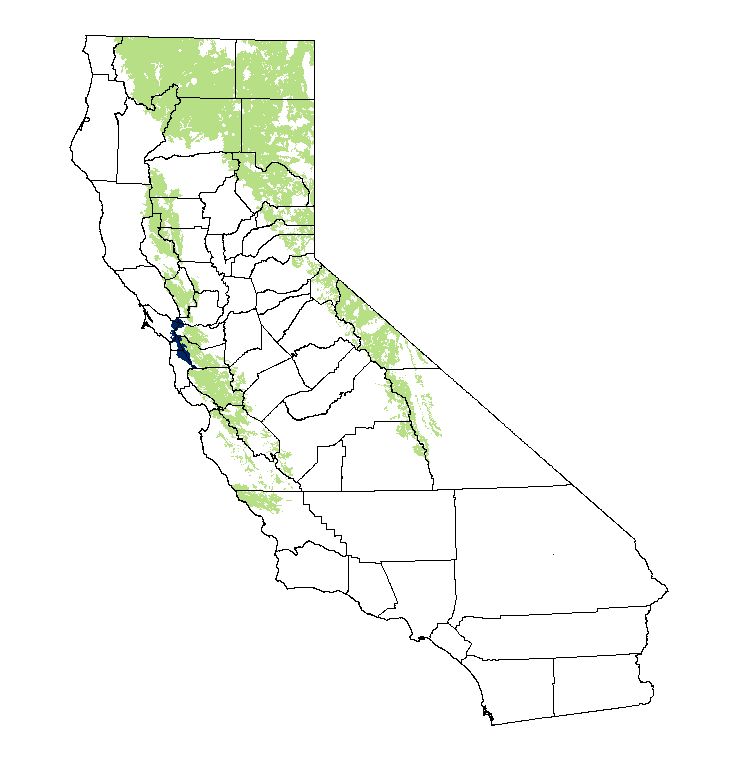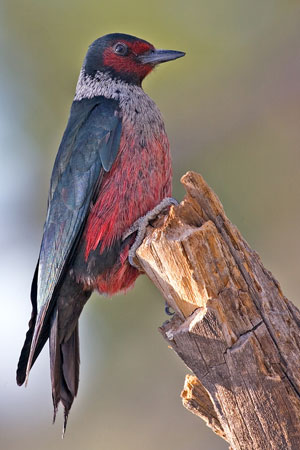
Home | About Us | Projects | Maps | Facts

Home | About Us | Projects | Maps | Facts

Lewis's Woodpecker (Melanerpes lewis) Description: Lewis's Woodpecker is medium-sized woodpecker with a dark red face, gray collar, and a dark iridescent green-black back. The belly is pinkish or salmon red. The wings and tail are all dark, without spots or patches. The cap, bill, and legs are black. The feet are gray. Males and female look alike. 
Calls:
The call is a series of "churs". Range / Habitat: Breeds from southeastern British Columbia southward to central California and New Mexico, eastward to western South Dakota. This species is common in open forests and woody riparian corridors of the Ponderosa Pine zone and below, especially in Garry Oak groves. Click the range map to learn more about the distribution of Lewis's Woodpecker in California. 
Spends winters from southern British Columbia and Oregon to Colorado and south to northern Mexico. Open pine-oak woodlands, oak, or cottonwood groves in grasslands, and Ponderosa pine country are preferred habitats. Diet: Flying insects make up the majority of the woodpecker's spring and summer diet. In fall and winter they feed mainly on acorns, other nuts, seeds, and fruits. Nesting: Lewis's Woodpeckers are monogamous and may form long-term pair bonds. The mated pair excavates a hole in a decayed tree - typically a cottonwood or Ponderosa pine. The nest hole is lined with wood-chips. They often reuse nest sites. The female lays 6 to 7 eggs. The male and female take turns incubating the eggs for 12 to 16 days. Both adults feed the young, which leave the nest after 28 to 34 days. The young are still dependent on the parents for several days after they leave the nest. Behavior: The Lewis's Woodpecker seldom, if ever, excavates wood for boring insects. Instead, it gleans insects from the tree surface, or most commonly, flycatches. It spends long periods of time watching for flying insects from the top of a pole or dead tree, and then flies out to catch them in flight. Lewis's Woodpeckers have a more steady, buoyant flight than most other woodpeckers, with slower wing-beats and longer glides. In flight they can often be mistaken for crows. (BirdWeb) Did you know?
More Information Animal silhouettes available to purchase » Photos: Natures Pics
|